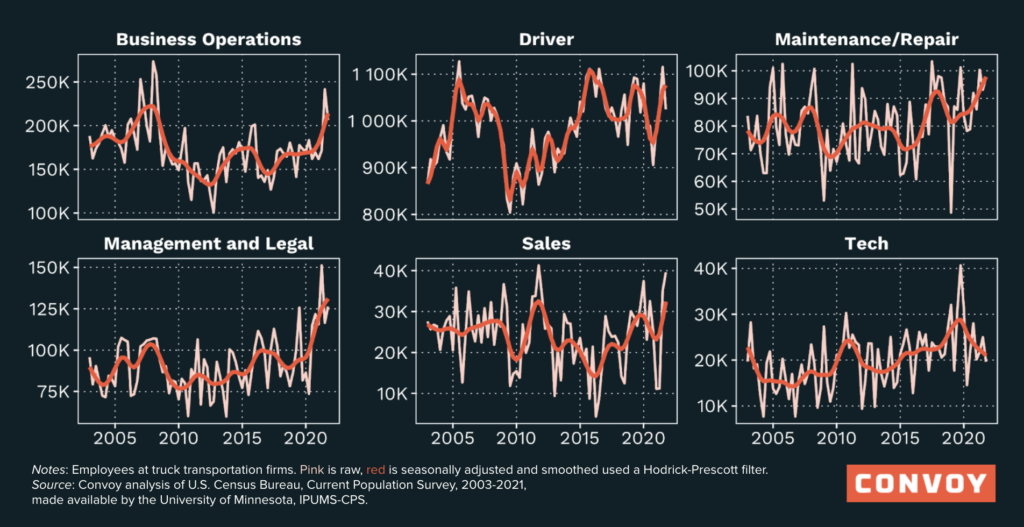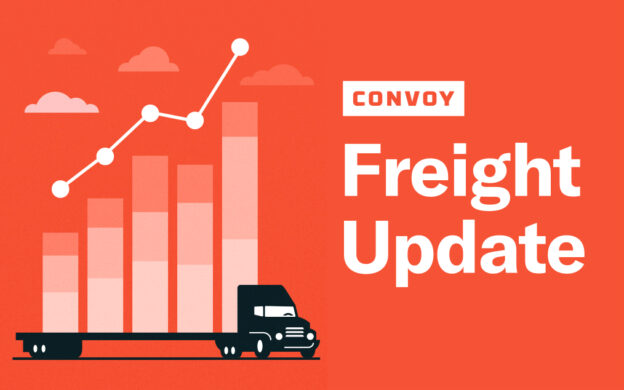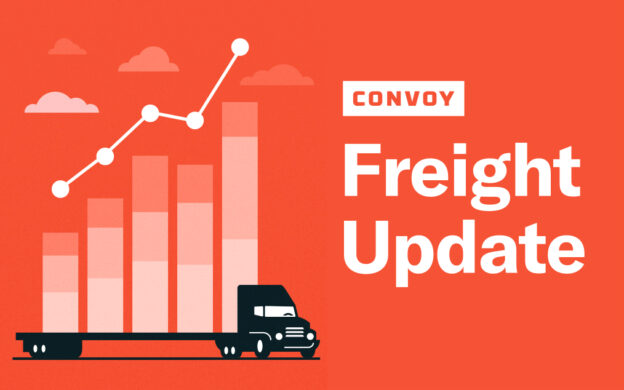Look Beyond the January Data to Make Sense of the Surge in Trucking Payrolls
Freight Research • Published on February 4, 2022
There are lots of reasons to discount the January jobs data published today by the Bureau of Labor Statistics (BLS). Beyond the obvious weather and pandemic disruptions, the market signal from this report was muddier than usual due to the combined effects of annual benchmarking and once-a-decade survey adjustments associated with the 2020 Census results that were implemented this month.
Still, the headline 467,000 increase in private payrolls was far better than the gloomy forecasts just a day or two ago suggested; December 2021’s job gains were also revised sharply upward, from the initially reported 199,000 payroll increase, to a gain of 510,000. The unemployment rate ticked 0.1 higher (effectively unchanged), and the labor force participation rate was up but remains low by historic norms.
However, the increase in payrolls appears to be mostly the result of the updated population controls. (Absent the new population controls, employment would have shown a 272,000 decline.) This will inevitably raise questions about what exactly we should take from the report: Bulls will see continued strength which would bolster the case for a decisive upward shift in interest rates, while bears will see a statistical sleight-of-hand and urge caution.
Trucking industry payrolls increased by 7,500 workers, package delivery jobs jumped by 21,200, and warehousing jobs jumped by 13,400. (All numbers are seasonally adjusted.) These changes appear to be heavily distorted by the methodological updates, so we caution against reading too much into the sequential changes. However, the updated data show a decisive shift in a trend that has gradually been emerging for much of the past decade: For the first time since records began, there are now more warehousing jobs in the United States than trucking jobs.
Looking beyond the topline numbers and blurry month-over-month changes hints at a more worrisome trend: In response to supply chain chaos over the past two years, the bulk of the trucking industry appears to have invested most heavily in expanding manager and operations headcounts, rather than in front-line drivers or productivity-enhancing science and engineering roles.
Anyone with a pulse on the trucking industry will be skeptical of the surge in freight payrolls in January (at least on the scale that the BLS data suggest).
It’s easy to forget that the headline truck transportation numbers published by BLS aren’t just truckers; they include back office and support workers at trucking companies as well. Even as trucking firms have sought to add drivers over the past year, they have also been aggressively onboarding other types of workers too.
According to our analysis of data from the U.S. Census Bureau’s Current Population Survey (CPS), a little over one-third of trucking company employees are not drivers. These roughly 600,000 workers are composed of business operations associates (roughly one-third of the non-driver total), management or legal workers and material moving workers (roughly one-fifth each) – with the remaining quarter mostly in maintenance/repair, sales, or finance/tech roles.
Over the past two years, management and legal roles have been growing fastest at trucking companies – up almost 40 percent (37,000 workers) between 2019-Q4 and 2021-Q4 – and business operations roles, which were up 27 percent (46,000 workers) over that two-year period. During the same period, driver headcounts at trucking companies were up by 1 percent (14,000 workers). (We aggregated the CPS data here at the quarterly period, rather than the monthly period reported in other analyses, to ensure sufficient survey sample sizes. We also seasonally adjusted and smoothed the data using a Hodrick-Prescott Filter.)
During the decade from 2009 to 2019, there were on average 11.3 drivers for every office manager at trucking firms; in 2021, that ratio fell to 8.2 drivers per manager. Presumably, the growth in management and operational support payrolls at trucking companies reflects – at least in part – supply chain disruptions associated with the pandemic and the broad-based market failure of annual freight contracts, which leads to more back office scrambling to meet service requirements.
With so much of the freight industry’s focus for 2022 squarely on improving driver productivity, this data suggest there is a clear opportunity for the trucking industry to address back office productivity at trucking companies as well.



